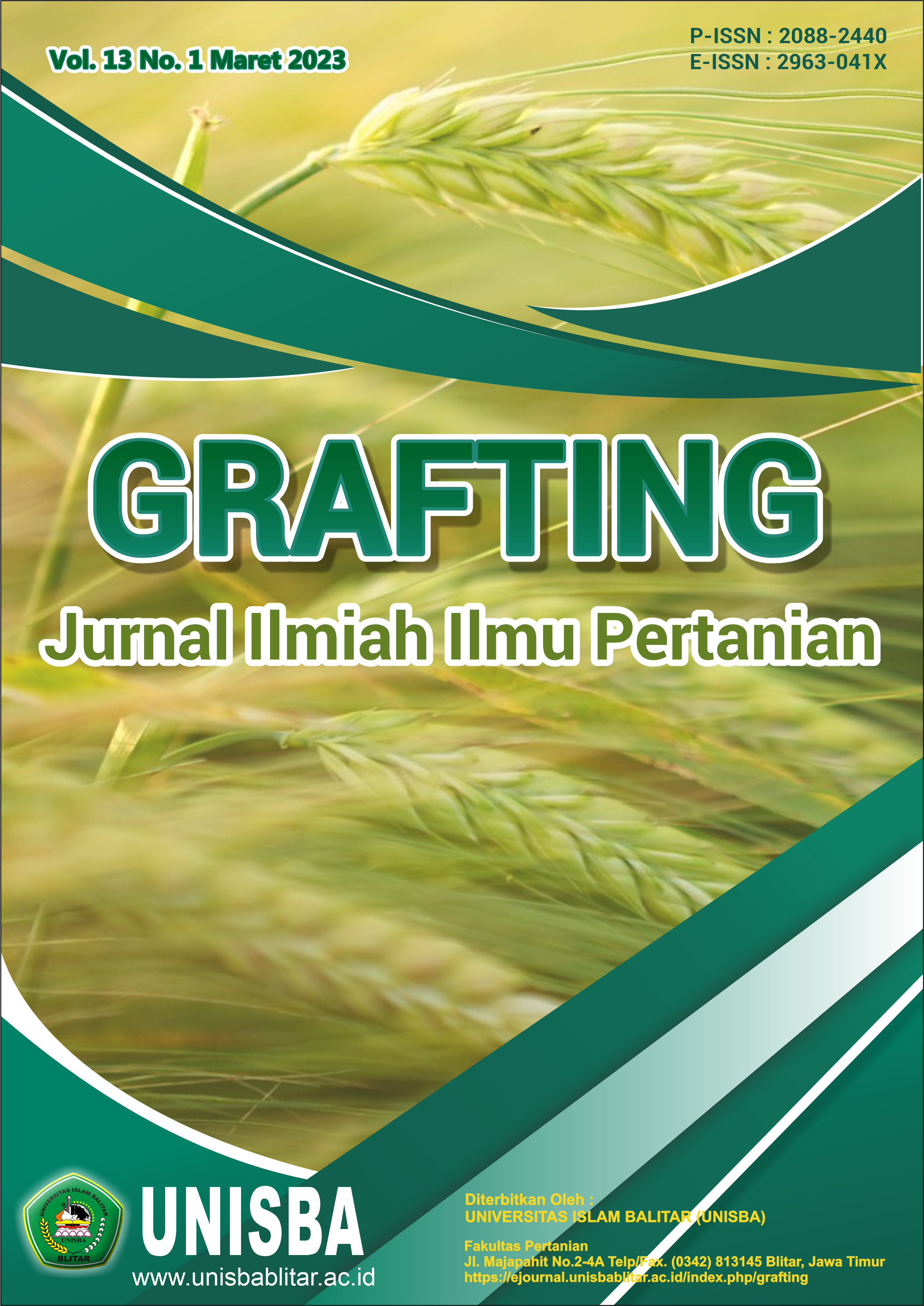PENGARUH PEMBERIAN DOSIS PUPUK NPK DAN KOSENTRASI URIN SAPI TERHADAP PERTUMBUHAN DAN HASIL TANAMAN MENTIMUN (Cucumis Sativus L.)
DOI:
https://doi.org/10.35457/grafting.v13i1.2771Abstract
This study aims to determine the interaction of NPK fertilizer and cow urine on the growth and yield of cucumber plants. To determine the best dose of NPK fertilizer on the growth and yield of mentimub plants, to determine the dosage of cow urine that is suitable for the growth and yield of cucumber plants. This research was conducted using factorial randomized block design (RBD) with 2 factors, the first factor was the dose of NPK fertilizer (N) consisting of 3 levels, namely 250 kg / ha (N1), 350 kg / ha (N2) 450 kg / ha (N3). The second factor is a cow urine dose of three systemf, namely: 300 ml / plot (U1), 400 ml / plot (U2), 500 ml / plot (U3). The observed variables include leaf area, diameter stem, fruit length, amount of fruit, and fruit weight. Data were analyzed using variance analysis (ANOVA) level of 5% and further testing with Duncan's Multiple Range Test (DMRT). The results showed that: There was no real interaction between NPK doses and cow urine fertilizer on the growth and yield of cucumber plants. The treatment of NPK fertilizer dose of 250 kg / ha (N2) significantly affected the length of the fruit. The best length of fruit yield was 20,7033 cm 2 harvest age 51 HST and the best fruit yield weight was 450 kg / ha amounting to 3367.11 g. in all harvests.
Downloads
Published
Issue
Section
License
Authors who publish with this journal agree to the following terms:
- Copyright on any article is retained by the author(s).
- The author grants the journal, right of first publication with the work simultaneously licensed under a Creative Commons Attribution License that allows others to share the work with an acknowledgment of the work’s authorship and initial publication in this journal.
- Authors are able to enter into separate, additional contractual arrangements for the non-exclusive distribution of the journal’s published version of the work (e.g., post it to an institutional repository or publish it in a book), with an acknowledgment of its initial publication in this journal.
- Authors are permitted and encouraged to post their work online (e.g., in institutional repositories or on their website) prior to and during the submission process, as it can lead to productive exchanges, as well as earlier and greater citation of published work.
- The article and any associated published material is distributed under the Creative Commons Attribution-ShareAlike 4.0 International License










